As property marketing specialists we work have worked with a variety of experts in the field to create content for our clients that’s relevant, useful and drives traffic. This guide was created by Natalie Ashbee, a garden designer and writer, and was originally published in January 2014.
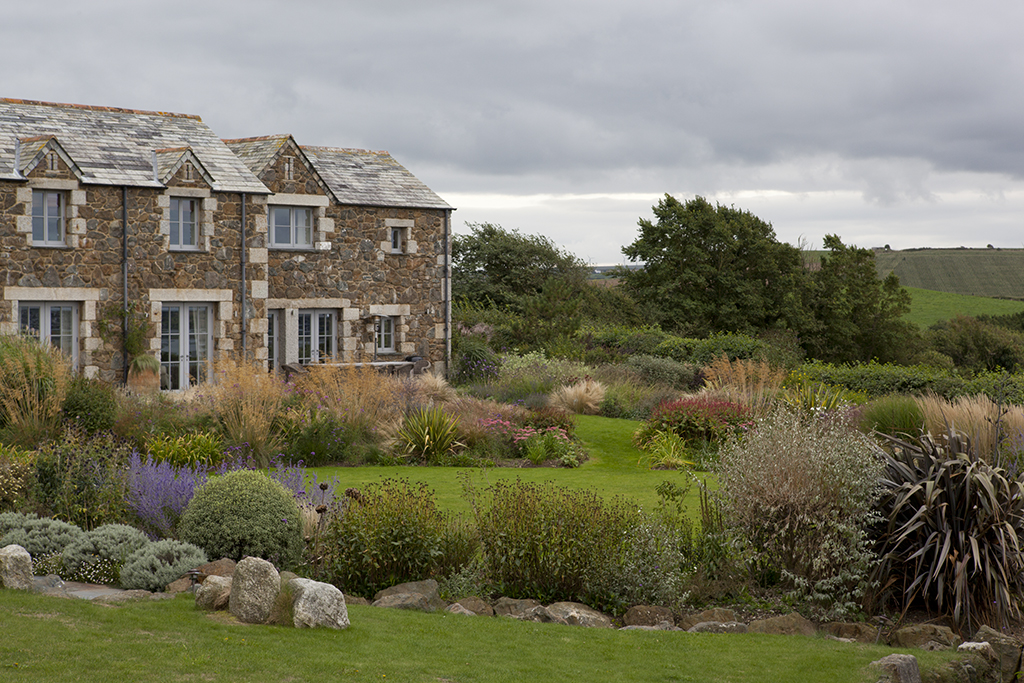
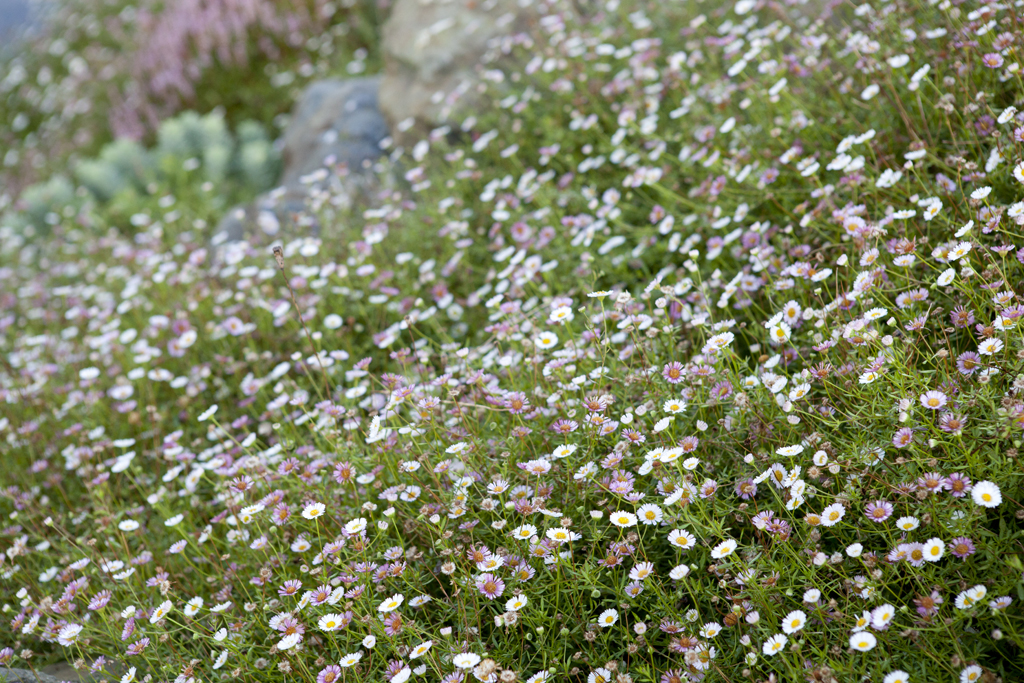
When visitors to Cornwall think of a typical Cornish garden, the image they conjure will normally be something along the lines of a grand country garden filled with rhododendrons, azaleas and camellias. They are not necessarily wrong in their thinking but these gardens are actually few and far between in the county, most of them lying along the sheltered southern coast between St Austell and Truro, acidic soil being a prerequisite for these types of plants. The rest of the county has a varied makeup of soil from loamy woodlands to sandy coastlines.
The gardens I have been working in for the last ten years, along the north coast of Cornwall, between Newquay and Tintagel, share one main thing in common – the battering, salty, Atlantic winds. Giving trees and hedges their signature inward lean, like little old fisherman making their way home at the end of a long day.
To be a gardener or designer on the north coast is to be a tough cookie! Likewise the plants we use have to be the hardiest selections of the best species. Here is my top ten of the best coastal plants, tried and tested:
Although more commonly used in Mediterranean gardens, Rosemary thrives in Cornwall. The arching varieties create amazing shapes on walls or use the upright selections for low hedges. The scent is unmistakable and an essential for cooking and barbecuing. Flowering in the winter and spring give it an extra dimension but its evergreen form makes it my number one plant.

‘Six Hills Giant’ is a blowsy cloud of tiny silver leaves and deep blue flowers in late spring and summer, often flowering again later in the summer and into autumn. Plants have to work hard to get on my list! Commonly known as catmint, the smell of this perennial is soft but pungent and it works well as both a path-edge or gap-filler.
The wiry stems of this hardy perennial might give it a dainty air, but don’t be fooled – they are actually incredibly strong, wind whistles through them without any effect. The flowers are a luminous purple, glowing in the evening light and very long lived. Birds, bees and butterflies love them too, their flat tops the perfect landing pad.
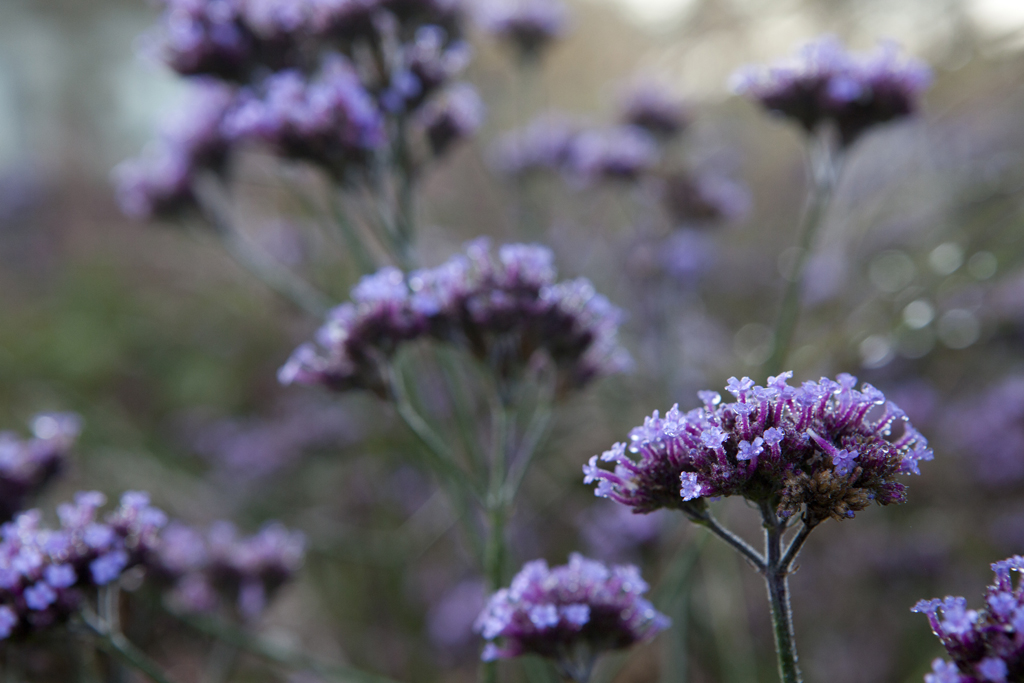
Often known as the Mexican daisy, we like to call it the Cornish daisy as it seeds itself merrily into every nook and cranny it can around the county. With finely cut leaves and the prettiest, daintiness but hardiest of daisy head, in shades of pink and white, plant this only if you love it and are happy to see it spread as it will colonise anything it can get its roots into. Happiest in wall crevices in sunny spots, it has been known to survive and flower all winter in many of my gardens.
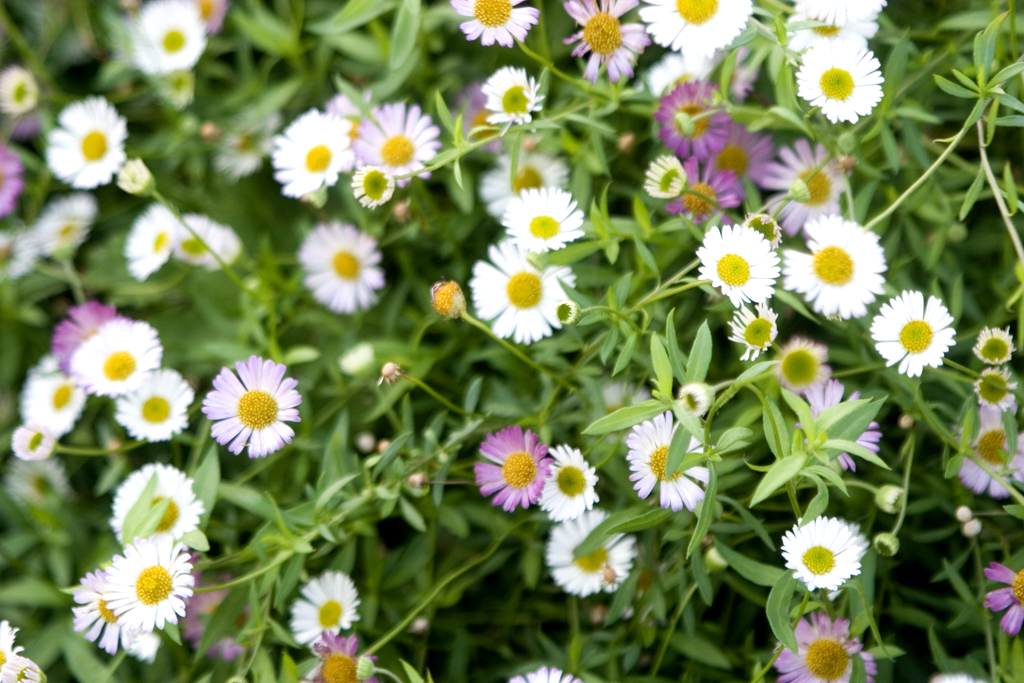
So tough it will actually grow in just about any open situation, even in sand. Viciously thorny, it has two seasons of glory as it flowers its socks off for most of spring and summer, followed by the plumpest red rose-hips imaginable, great in syrups and cordials. The magenta pink flowers are my favourite but they also come in purest white and pretty blush pink.
My young son says the name of this one is like a Harry Potter spell and it is pretty magic. My favourite grass, evergreen, happy in sun or shade and a glorious arching plant which although short-lived, will seed happily and can be pulled out where not needed. Nicknamed the Pheasant’s tail grass, its slim blades glow in low light in wonderful shades of emerald green, tawny orange and burnt umber. In full sun it bleaches out occasionally but in shade it keeps it’s green lushness. Give it room though, it can easily fill a good metre of space.
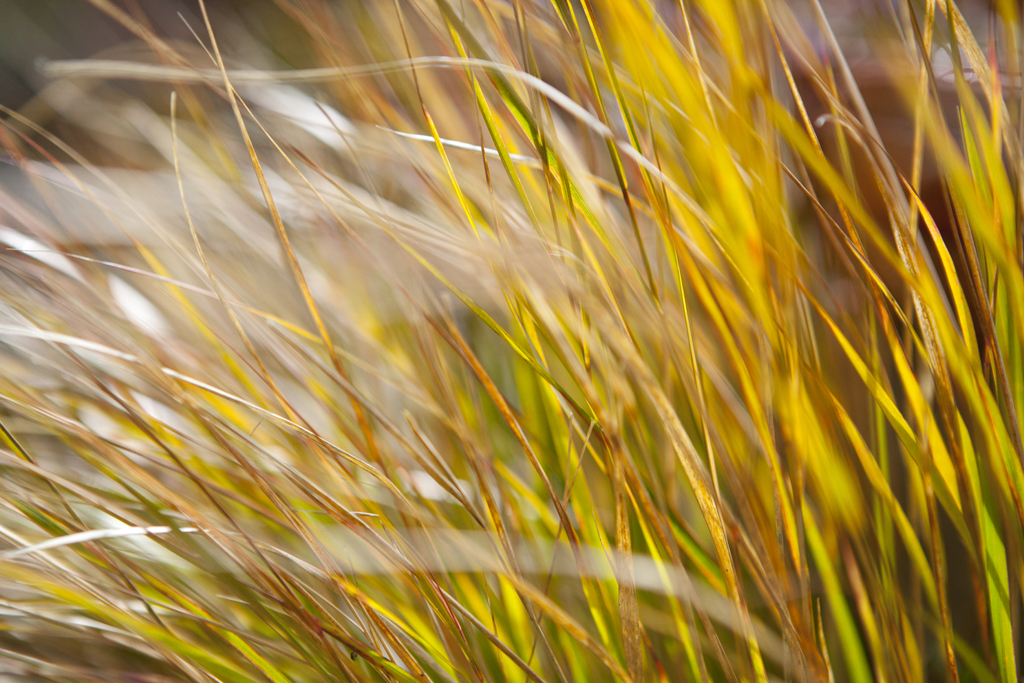
The New Zealand flax plant is the toughest of them all, even if its long strappy leaves get stripped to shreds it will survive. This is a pretty common sight in a Cornish coastal garden but with good reason. The biggest varieties can give wonderful stature to a garden and can be used as a stand-alone plant or planted en masse for a real punch. It comes in a variety of colours, from yellow through red to black, with stripes and in a variety of sizes. Some, such as ‘Evening Glow’, are incredible with the setting sun behind them so place them carefully.
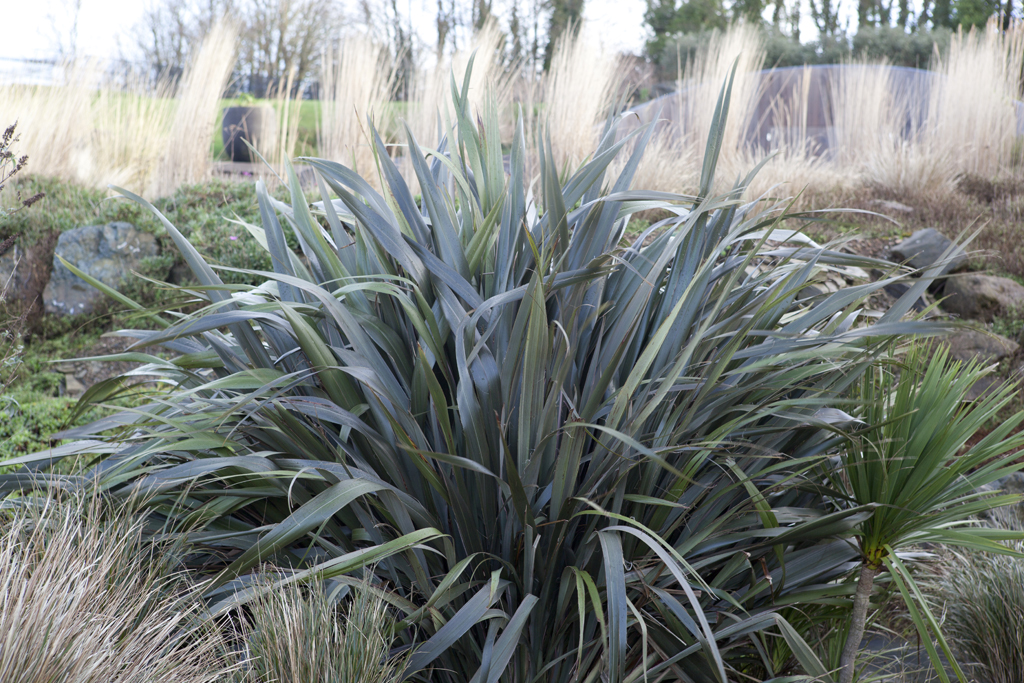
With their gorgeous big blue heads and strappy green leaves these are another standard for Cornish coastal gardens, their long thick stems surprisingly tough. The flower heads eventually fade but the seed heads they leave behind are a visual feast themselves and make pretty Christmas decorations sprayed with gold or silver.
I’ll finish with two hedging plants, absolutely essential as a windbreak in coastal gardens and forming the first line of defence against the biting winds.
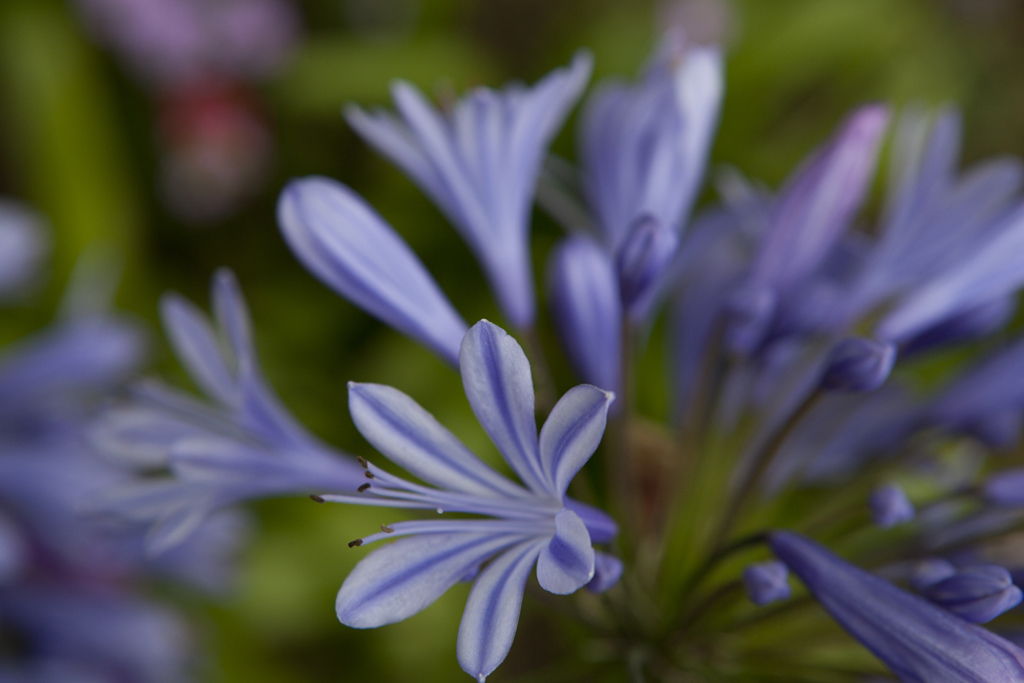
This one is the toughest that I’ve found, with a silver back to its dark green front but with a hidden special secret – in autumn it has a little creamy white flower with an exquisite scent, just when you least expect it. It can be kept clipped and shaped, or left to grow wild and wooly depending on the style of your garden.
The second is Euonymus japonicus, a lovely, bright, shiny green hedging plant which takes a while to get started but will take a good beating well, often seen on cliff tops in an amazing array of craggy shapes. It has such a lovely freshness to its new spring leaves, which make it my ‘hopeful’ plant of choice, heralding a new growing season.
Use any of these en masse or as a group for maximum impact or all mixed up together for a visual feast. Even just using hedging plants clipped into interesting shapes can look amazing. The craggier the better, to give drama and excitement all year round.
One last thing, if something doesn’t work first time round, don’t persevere! If it isn’t happy then change it for something that is. There’s no point battling more than you will do anyway and you’ll just get disheartened in the process. The trick with true coastal gardens is to create interest all through the year. Come rain or shine, cutting winds or sea mizzle, your coastal garden needs to look fabulous. Even in the middle of summer you can find yourself trapped indoors by our ever-changing weather, so make the view an interesting one.

Natalie Ashbee is an experienced Garden and Planting Designer and Garden Writer.
Natalie Ashbee Gardens was established in 2003 and has grown from the maintenance of small gardens to the landscape and planting design of high-end new properties. Getting her start in her home country of Cornwall, Natalie currently lives in France with photographer husband Mark and their three children. Natalie studied Garden Design at Duchy College taught by Chelsea Gold medal winner John Moreland.
Natalie’s garden design style is simple but effective, stylish but practical and always individual. She strives to blend interior and exterior design to create a living space that works together as a whole to make your lives as calm or as invigorating as your needs require. She has had considerable experience of growing plants suited to Cornwall’s coastal conditions but also enjoys creating cottage gardens, formal gardens, woodland gardens, low maintenance gardens and prairie gardens.
For well-thought-out and relevant content or insights in the property development world, then look no further. We create expert content that helps to deliver your market expertise to your customers. Get in touch to find out more.